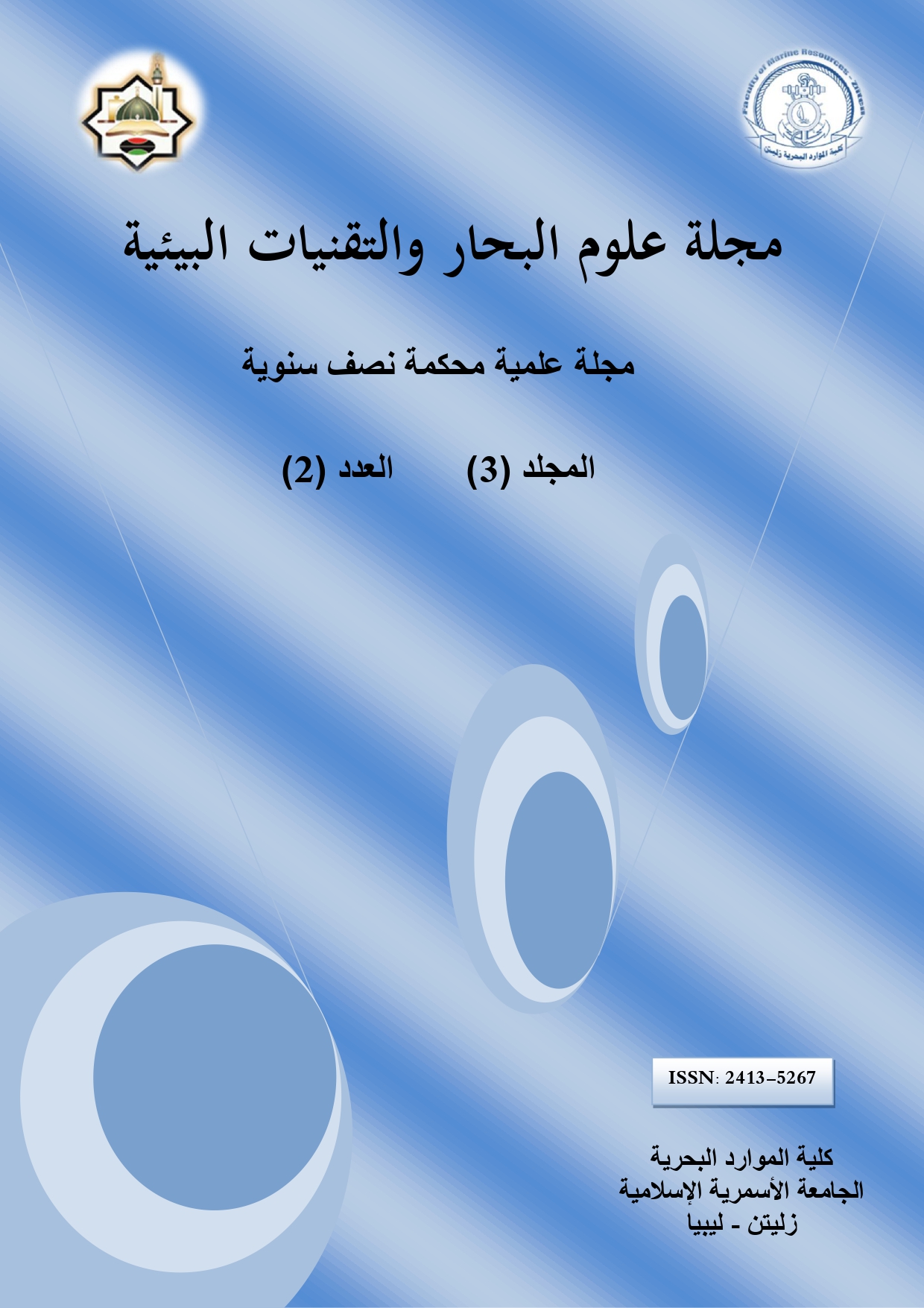تراكيز غاز الاوزون بالهواء الجوي لمدينة طرابلس، ليبيا
DOI:
https://doi.org/10.59743/jmset.v3i2.94الكلمات المفتاحية:
تلوث الهواء، الأوزون، طرابلس، ليبياالملخص
اقيمت هذه الدراسة لتقييم حالة التلوث الهوائي بغاز الاوزون في اجواء مدينة طرابلس، التي تعتبر أكبر المدن الليبية من الناحية العمرانية والسكانية ويتمركز فيها جُل النشاط التجاري والاقتصادي والصناعي والسياحي والثقافي في ليبيا، حيث استهدفت الدراسة رصد تركيز غاز الاوزون وسط المدينة وعلاقته بالمتغيرات المناخية. اوضحت النتائج ان متوسط التركيز السنوي للأوزون في وسط مدينة طرابلس بلغ 79 ميكروجرام/م3 وقد سجلت المتوسطات الفصلية أقل مستوى لها في فصلي الشتاء والربيع (36 و34 ميكروجرام/ م3) على التوالي، بينما في فصل الصيف والخريف سجلت أعلى مستوياتها إذ وصل متوسط التركيز 106، 105 ميكروجرام/ م3 على التوالي. كل المتوسطات في الساعة لم تتجاوز الحدود القصوى المسموح بها باشتراطات الهيئة العامة للبيئة الليبية (200 ميكروجرام/ م3). اعلى تراكيز شهرية سجلت في شهر اغسطس وسبتمبر إذ بلغت 127 ميكروجرام/ م3 وكانت أقل قيمة تم تسجليها في شهر يناير حيث بلغت 20 ميكروجرام/ م3. ولوحظ ارتفاع تركيز غاز الاوزون مع زيادة قوة الاشعاع الشمسي وينخفض اثناء الليل، وذروة نشاطه كانت في الساعة الثالثة ظهرا وسبب زيادة تركيز متوسطات تعود إلي ارتفاع في درجات الحرارة و زيادة عدد ساعات السطوع الشمسي، حيث اثبتت النتائج وجود علاقة طردية P=0.68)) بين درجة الحرارة و وتركيز غاز الاوزون و وجود علاقة عكسية متوسطة (0.573-p=) بين سرعة الرياح وتركيز غاز الاوزون، حيث ان بزيادة سرعة الرياح، تزداد حركة الملوثات الجوية، ويزداد انتشارها، ويقل بالتالي تركيزها.
المراجع
قائمة المراجع باللغة العربية
تقرير الإحصاءات البيئية لسنة 2013 في دولة قطر.
تقرير المركز الوطني للإحصاء نوعية الهواء 2011 في دولة الامارات العربية المتحدة.
تقرير المركز الوطني للإحصاء نوعية الهواء 2013 في دولة الامارات العربية المتحدة.
تقرير المركز الوطني للإحصاء نوعية الهواء 2014 في دولة الامارات العربية المتحدة.
حيدر، عبدالرزاق كمونه (1987). العوامل الطبيعية وتلوث البيئة. مجلة النفط والتنمية، دار الشؤون الثقافية العامة، بغداد، تشرين الثاني-كانون الأول، 6: 8-30.
الصطوف، عبد الاله (1995). تلوث البيئة. منشورات جامعة سبها. سبها، ليبيا.
الطويل، محمد نبيل (1999). البيئة وتلوث: محليا وعالميا. الطبعة الاولى، دار النفائس للطباعة والنشر والتوزيع، بيروت، لبنان.
النشرة السنوية لإحصاءات البيئية لسنة 2012 لدولة الكويت.
الهيئة العامة للبيئة (2010). تقرير وحدة رصد ملوثات الهواء عن مستوى تلوث الهواء بمدينة طرابلس (ميدان الشهداء) في الفترة من 21/7 إلي 27/7/2010.
قائمة المراجع باللغة الإنجليزية
Boston M.A. (2004). Health Effects of Outdoor Air Pollution in Developing Countries, A Literature Review. Health Effects Institute (HEI), USA, pp. 1-69.
WHO (1999). Health Costs due to Road Traffic Related Air Pollution. Available online at [http://www.who.dk/London 99].
WHO (2002). The World Health Report 2002: Reduction Risk, Promoting Healthy Life. Geneva, Switzerland.
WHO (2011). Health Costs due to Road Traffic Related Air Pollution.
التنزيلات
منشور
إصدار
القسم
الرخصة
الحقوق الفكرية (c) 2017 مجلة علوم البحار والتقنيات البيئية

هذا العمل مرخص بموجب Creative Commons Attribution 4.0 International License.









